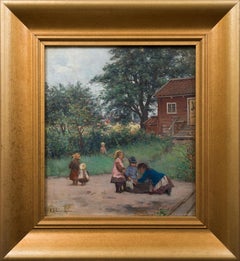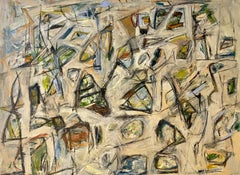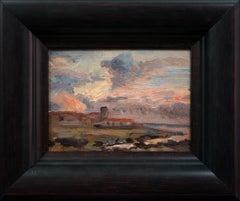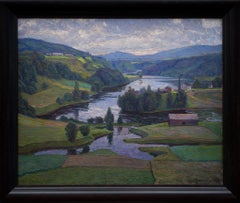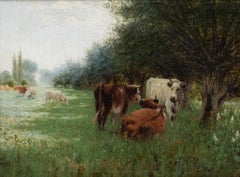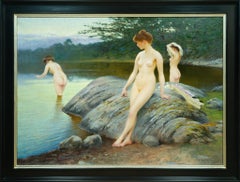Sweden - Art
Late 19th Century Realist Sweden - Art
Canvas, Oil, Board
2010s Abstract Sweden - Art
Chalk, Acrylic
1920s Post-Impressionist Sweden - Art
Oil, Board
1910s Post-Impressionist Sweden - Art
Canvas, Oil
Late 19th Century Realist Sweden - Art
Canvas, Oil
Early 20th Century Romantic Sweden - Art
Canvas, Oil
Early 1900s Post-Impressionist Sweden - Art
Oil, Board
2010s Abstract Expressionist Sweden - Art
Linen, Acrylic
Late 18th Century Old Masters Sweden - Art
Oil, Wood Panel
Late 19th Century Post-Impressionist Sweden - Art
Canvas, Oil
Late 19th Century Realist Sweden - Art
Oil, Wood Panel
1950s Naturalistic Sweden - Art
Oil, Board
Late 19th Century Realist Sweden - Art
Canvas, Oil
1910s Post-Impressionist Sweden - Art
Canvas, Oil
Early 1900s Symbolist Sweden - Art
Canvas, Oil
Early 2000s Abstract Expressionist Sweden - Art
Raw Linen
1840s Romantic Sweden - Art
Paper, Watercolor
1880s Romantic Sweden - Art
Canvas, Oil
1940s Sweden - Art
Canvas, Oil
Early 20th Century Fauvist Sweden - Art
Oil, Panel
Early 2000s Contemporary Sweden - Art
Canvas, Oil
2010s Abstract Sweden - Art
Acrylic
2010s Abstract Expressionist Sweden - Art
Acrylic, Carbon Pencil
2010s Pop Art Sweden - Art
Metal
1880s Impressionist Sweden - Art
Oil, Board
2010s Abstract Expressionist Sweden - Art
Oil
1890s Romantic Sweden - Art
Canvas, Oil
1890s Impressionist Sweden - Art
Canvas, Oil
2010s Abstract Expressionist Sweden - Art
Canvas, Cotton Canvas, Acrylic
1920s Impressionist Sweden - Art
Canvas, Oil
2010s Pop Art Sweden - Art
Silver, Bronze
Mid-19th Century Realist Sweden - Art
Canvas, Oil
Early 1900s Pointillist Sweden - Art
Canvas, Oil
1910s Post-Impressionist Sweden - Art
Canvas, Oil, Board
1910s Naturalistic Sweden - Art
Canvas, Oil
1880s Romantic Sweden - Art
Paper, Watercolor
Early 2000s Pop Art Sweden - Art
Canvas, Acrylic
1980s Contemporary Sweden - Art
Screen
2010s Abstract Expressionist Sweden - Art
Acrylic
1910s Naturalistic Sweden - Art
Paper, Watercolor, Chalk, Ink
1890s Impressionist Sweden - Art
Canvas, Oil
1950s Art Nouveau Sweden - Art
Mixed Media, Oil, Gouache, Panel
Mid-19th Century Romantic Sweden - Art
Canvas, Oil
Late 18th Century Rococo Sweden - Art
Canvas, Wood, Oil
1810s Old Masters Sweden - Art
Canvas, Oil
1920s Sweden - Art
Paper, Watercolor
Late 19th Century Impressionist Sweden - Art
Canvas, Oil
1880s Sweden - Art
Watercolor
2010s Abstract Sweden - Art
Linen, Acrylic
2010s Abstract Sweden - Art
Raw Linen, Acrylic
Early 20th Century Post-Impressionist Sweden - Art
Canvas, Oil, Board
2010s Abstract Sweden - Art
Linen, Acrylic
1820s French School Sweden - Art
Canvas, Wood, Oil
1910s Post-Impressionist Sweden - Art
Canvas, Oil
1920s Abstract Sweden - Art
Paper, Chalk
2010s Abstract Expressionist Sweden - Art
Oil
1920s Cubist Sweden - Art
Paper, Chalk
1920s Post-Impressionist Sweden - Art
Canvas, Oil
1920s Other Art Style Sweden - Art
Paper, Ink, Watercolor
19th Century Victorian Sweden - Art
Oil, Wood Panel
